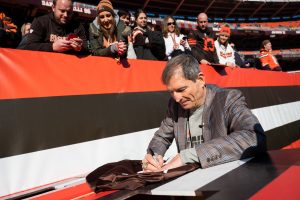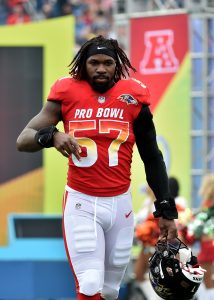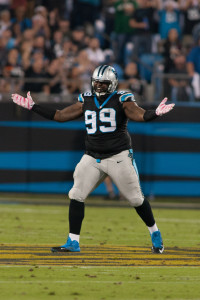The NFL has not held a supplemental draft since 2019; the league canceled the 2021 summer event this week. The July draft has not been especially consequential in a long time, but in the 1980s, it brought some big-name players into the league.
A Browns move 36 years ago today began that run. On July 2, 1985, the Browns ended one of the more intriguing college-to-NFL sagas by selecting Bernie Kosar with the first overall pick in the supplemental draft. The eventful stretch that led the acclaimed quarterback back to Ohio involved a few teams, and it ended up elevating the Browns into an AFC power for the rest of the ’80s.
 After their “Kardiac Kids” 1980 season, the Browns regressed for a period. By 1985, they were coming off three sub-.500 seasons in four years. But, in a situation more complex than the ping-pong ball-induced sequence that brought LeBron James to Cleveland in 2003, a northeast Ohioan helped steer the Browns back to contention.
After their “Kardiac Kids” 1980 season, the Browns regressed for a period. By 1985, they were coming off three sub-.500 seasons in four years. But, in a situation more complex than the ping-pong ball-induced sequence that brought LeBron James to Cleveland in 2003, a northeast Ohioan helped steer the Browns back to contention.
A two-year starter at Miami, Kosar opted for the supplemental draft over the April standard draft. The QB who started on the Hurricanes’ first national champion team was a Cleveland-area native and sought to play for the Browns. But players on the heels of their sophomore seasons, as Kosar was in 1985, were not yet allowed to enter the NFL draft. A summer graduation, however, exposed a loophole in this system. Kosar ended up bypassing the April draft in order to land in Cleveland via the lower-profile supplemental event.
To obtain the first pick in the supplemental draft, the Browns swung a deal with the Bills. On April 9, 1985, the AFC teams agreed on a trade that sent Buffalo’s first overall supplemental pick to Cleveland for the No. 7 overall selection in 1985, a 1986 first-rounder, along with third- and sixth-round choices. The Bills held the top supplemental pick due to their 2-14 1984 season, a record that also gave them Bruce Smith first overall in the April draft. (Possessing then-USFL QB Jim Kelly‘s rights, the Bills were not in play for Kosar.)
The Vikings and Oilers — the teams picking second and third in the regular draft — protested this arrangement, but the NFL let Kosar decide which draft he entered. Kosar did visit the Vikings, who traded up from No. 3 to No. 2 with the Oilers to be in better position to land that year’s top QB prospect, but communicated to them he wanted to play for his hometown team. Minnesota ended up trading back down, to No. 4 overall, and selecting Hall of Fame defensive end Chris Doleman in the April draft. The Browns chose Kosar in July.
Kosar quarterbacked the Browns to the playoffs four times, including his rookie season, taking over Cleveland’s QB1 role that year before breaking through as a full-season starter in 1986. The Browns earned the No. 1 seed in ’86 and rode their stationary quarterback’s 489-yard performance to a divisional-round comeback win over the Jets. John Elway‘s “The Drive” ended the Browns’ run a week later, and a Kosar- and Earnest Byner-led comeback bid in Denver in the 1987 AFC championship game concluded with Byner’s infamous fumble. The Browns lost to the Broncos in the 1989 AFC title game as well and failed to make it back to the playoffs with their popular passer.
The then-Bill Belichick-led Browns released Kosar midway through the 1993 season. He caught on with the Cowboys, filling in for Troy Aikman on multiple occasions en route to Dallas’ Super Bowl XXVIII championship. Kosar retired after the 1996 season. The supplemental draft produced linebacker Brian Bosworth, Hall of Fame wideout Cris Carter, Pro Bowl running back Bobby Humphrey and Pro Bowl receiver Rob Moore in the five years after Kosar’s move.




